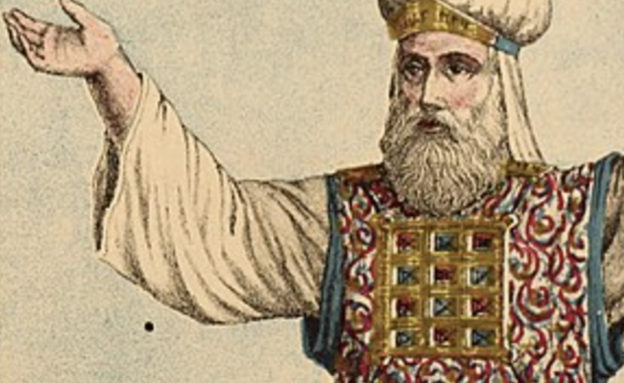When you are going to meet someone important, the right clothes for the occasion are a definite must. While we are pretty relaxed about formality in New Zealand, there are times where the right clothes are important. Formal wear is important at a wedding, less so on a farm. When meeting the Queen, you might want to dress up a little. Meeting me, you should not bother too much.
Meeting God is definitely a time when you want to dress right. No, I am not suggesting a strong push for Sunday Best. But when you meet Almighty God, you need clothing that meets the standard. Sadly, even our very best, whether clothes or works, are as filthy rags because of our sin.
So how do unholy people come into the presence of a Holy God? That problem faced Aaron the high priest, a sinner like us who also participated in the terrible Golden Calf incident at Sinai. How could God accept him into the Most Holy Place? By a Forgiving Outfit. An outfit which demonstrated the forgiveness he received, the forgiveness he sought on behalf of his people, and the forgiveness they and we receive because of the Best High Priest, Jesus.
Like the tabernacle, the priests for Aaron and the priests were made from contributions from the Israelites, in their case from the (expensive) blue, purple, and scarlet yarns given (v.1). The first garment Exodus records as made from this yarn is the ephod, which was a sleeveless vest the High Priest wore over his other garments (vv.2-5).
The ephod served as a reminder that the High Priest represented Israel, as it had twelve onyx stones with the tribal names inscribed embroidered onto the shoulder pieces (vv.6-7). Aaron literally carried the weight of Israel on himself as he ministered with the ephod on.
Secondly, the craftsmen made the breastpiece which the High Priest wore, of the same fabric as the ephod (vv.8-9). This breastpiece symbolised judgement, and contained the Urim and Thummim which were used to discern God’s will over a certain matter (see Exodus 28).
As with the ephod, the breastpiece bore twelve stones with the names of Israel’s tribes inscribed (vv.10-14). After this, the breastpiece was attached to the ephod (vv.15-21), so that when the High Priest wore it he bore Israel not only upon his shoulders, but close to his heart.
Thirdly, they made the High Priest’s robe, which was made entirely out of expensive blue yarn (v.22-3). The hem of the robe was embroidered with images of pomegranates, which symbolised fruitfulness (v.24). They made small gold bells which they attached on the hem between the pomegranates (vv.25-6), so that when Aaron moved into the Most Holy Place he would be heard by God (it was pitch black inside), and not die (Ex. 28:35).
Fifthly, the craftsmen of Israel made fine linen coats for Aaron and his sons (the priests), topping off the arrangement (v.27). The High Priest wore a special turban, also made of fine linen, while he and the priests also received linen caps and undergarments, with a sash of linen and blue and scarlet yarns (vv.28-9).
The turban, made of linen, finally bore one special other feature. A plate of pure gold, with “Holy to the LORD” inscribed on it (v.30), was attached to the turban, demonstrating that the High Priest was set apart and sanctified for his special service to God (v.31).
What made Aaron fit to come into God’s presence? He wore the outfit of a High Priest which gave him the right to enter into the Most Holy Place of the tabernacle (once a year) to minister. The outfit was forgiving, not in the sense that it was flattering on any occasion, but that it symbolised the covering over of the sins of the individual wearing it, and those he represented.
Even though Aaron was a sinner, and directly involved in the idolatry of the Golden Calf incident, he was still able to enter into God’s presence, declared “Holy to the LORD”. This holiness did not come from himself, but from a declaration by God. God declared that the appropriate person wearing the appropriate clothes entering his presence at the appropriate time would not be killed, but allowed to offer intercession both for his own sins and that of his people.
But that intercession pointed forward to everything which the clothes symbolised: the intercession and sacrifice of Jesus, who is the only sinless High Priest. Jesus did not wear robes symbolising righteousness; everything he ever did was righteous. Jesus did not need to seek forgiveness for his own sins, because he had none. Instead, he was truly fit to offer himself as a sacrifice for Aaron’s sins, and our sins too.
Jesus bore our sins on his shoulders at the Cross, and he bore our names close to his heart in his great High Priestly sacrifice. His sacrifice makes us clean, as our unrighteous robes are exchanged for his righteousness, making us “Holy to the LORD.”

